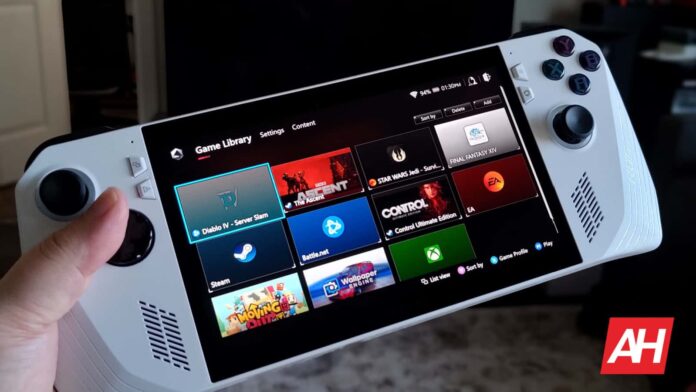[ad_1]
This week ASUS officially launched the ROG Ally, and I’ve been spending the last few days with it, getting a little bit of hands-on time in to test out how it holds up.
The ROG Ally is a handheld gaming PC that runs on Windows 11 proper. Although it’s not the first device of its kind as there are more than a few other options that run on Windows. It is however the latest device in this handheld gaming PC category. And so far, it’s shaping up to be a beast of a machine. There will be a full review of the device coming later but I wanted to give some of my initial thoughts on it.
And I figured this might be especially useful for anyone considering a device like this.
Don’t expect the ROG Ally to have excellent battery life
I’m just going to go straight for the thing that I believe most people are concerned with. The battery life. I won’t mince words here. The battery life isn’t great. In my limited play testing so far, the Ally will often drain the battery to where it dies in no more than two hours. I want to point out though, that I have done literally nothing to try and boost the battery longevity on a single charge. The brightness is about 80%, I have the Ally set to performance mode, and I’m using the 120Hz refresh rate.
The games I have tested so far include Final Fantasy XIV, a little bit of The Ascent, and a very brief check-in with Diablo IV. I’ll be doing some more testing with Diablo IV this weekend. But so far, with these games, the battery tends to die faster than you might want.
You will realistically get somewhere between an hour and a half, and probably two hours if you’re playing more demanding games. Expect that time to lessen a little if you’re playing MMOs or other online multiplayer games.
In short, the battery life is a letdown. But not necessarily unexpected. With better performance than the Steam Deck and a higher resolution and higher refresh rate display, I suspected the battery life would take a bit of a dive. I’m sad to report that my suspicions were correct here.
But it’s not all bad news. You can tweak the performance, wattage and other features to adjust the battery life and get a little more playtime out of the Ally. And you could always plug it in if you want longer play sessions.
There’s no way it should be this quiet
ASUS is using some sort of black magic here to get this thing to stay as quiet as it is when the AMD Z1 Extreme APU and the fans are at full rip. You’re neck deep in the middle of a gameplay session and you’d expect louder fans like on the Steam Deck. But, that just isn’t the case.
They’re not completely silent. But they are much quieter than you would expect. And that is a really good thing to see for a device like this. Especially if you anticipate taking it with you and playing it in public.
Comfort is key, and ASUS mostly nails it here
When it comes to handhelds, I love them all for different reasons. The Switch is so light and easily portable. The Steam Deck has an amazingly ergonomic build that, despite its weight, is super comfortable to hold.
The ROG Ally lies somewhere in the middle. It has some weight shaved off compared to the Steam Deck and is more ergonomic than the Switch. But I still find myself missing those deep concaved sections on the back of the Steam Deck where your fingers sit for access to the remappable keys. I also don’t think that the corners of the device are as uncomfortable as some have found them to be. That doesn’t mean that they won’t be for some people. But for me holding the device felt just fine.
First impression final thoughts
For a first impression, ASUS has made a really good one. The ROG Ally is a great little device that will definitely satisfy your desire to play PC games on the go. I still need to do more testing with it but so far, I think it’s going to give the Steam Deck a run for its money.
If you’re already interested in getting a ROG Ally for yourself, you can find them exclusively through Best Buy.
[ad_2]
Source link
